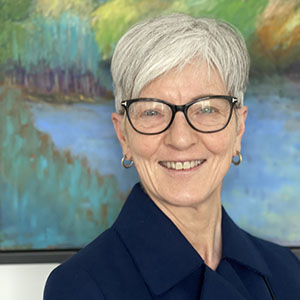Introduction
Throughout modern history and around the globe, nonprofits, NGOs, and civil-society organizations have played an essential role in solving humanity’s toughest problems.[1] Supported by a vast web of foundations, public funding, and private donors, these organizations take on challenges from extreme poverty to infectious disease to educational inequity.
Download the full report
However, as a sector, there is a problem in the way we fund these entities. Funding sources—national, state and local governments; multilateral and bilateral institutions; private foundations and individuals—are part of a complex system with inconsistent practices. Indirect-cost reimbursement, the specific focus of this paper, ranges from zero to a funder’s “fair share.”
Five foundations—the Ford Foundation, the William and Flora Hewlett Foundation, the MacArthur Foundation, the Open Society Foundations, and the David and Lucile Packard Foundation—formed a collaborative with The Bridgespan Group in 2016 to examine the problem of insufficient cost recovery. This paper shares what we have learned together, in hopes that it will be useful to the broader social sector.
We have found that despite funders’ intentions, today’s system is not consistently creating strong grantee organizations. In 2017, we examined the financial health of the 274 most highly cofunded nonprofits of the largest 15 US foundations. More than half suffered from frequent or chronic budget deficits, defined as at least two of the past five years. And 40 percent had fewer than three months of reserves in the bank to cushion financial shortfalls. In fact, 30 of the 274 organizations showed negative reserves—making them technically insolvent.
Why is this? Project grants, which represent more than three-quarters of US foundation giving and nearly all government funding globally, are the source of most of this underfunding.[2] While project grants are an essential tool in philanthropy, they routinely discount the core administrative and operational costs of delivering programs and services.
Over half of the 15 largest US foundations have a flat-rate indirect-cost reimbursement policy of 15 percent or less.[3] While state and local governments granting federal money are supposed to provide a minimum reimbursement rate of 10 percent, actual indirect-cost allowances are often lower and sometimes nonexistent.[4] Many global funders also restrict grants to projects and tend to limit indirect-cost reimbursement to between 5 percent and 8 percent.[5]
Rigorous research confirms that grantees’ actual indirect costs nearly always exceed these allocations. In a 2015 Bridgespan study of a large foundation’s grantees, for instance, indirect costs ranged from 21 percent to 89 percent of direct program costs, with clear differences in cost structure by type of nonprofit. Nonprofit research labs, for example, had a median indirect-cost rate of 63 percent, two and a half times the 25 percent median rate of direct-service organizations. Similar variation exists in the private sector as well, where indirect-cost rates are not considered a measure of either effectiveness or efficiency. Indeed, for any enterprise, these figures simply reflect the mix of costs required to deliver results.
This report synthesizes an array of primary and secondary research documenting the progress made on understanding and addressing this issue. It also highlights the funder collaborative’s recent efforts, which demonstrate momentum for change. Specifically, the presidents of the collaborative’s member foundations have announced that they will be experimenting with a set of best practices and policies to combat the “starvation cycle” that undercuts the effectiveness of their grantees. They have also reached out by letter to small group of peer philanthropists, inviting them to help advance the work toward solutions. We share their learnings and experience with hopes for continued cross-sector collaboration, which we believe can improve cost recovery and strengthen the nonprofit sector for years to come.
We are grateful to the nearly 80 grantees that have explored the cost recovery challenge with us, as well as the financial experts and nonprofit intermediaries who have contributed to this collaboration, including BDO, CostTree, FMA, GuideStar, Humentum, Independent Sector, KPMG, Nonprofit Finance Fund, and Northern California Grantmakers, and many others who have researched this issue over the years.





